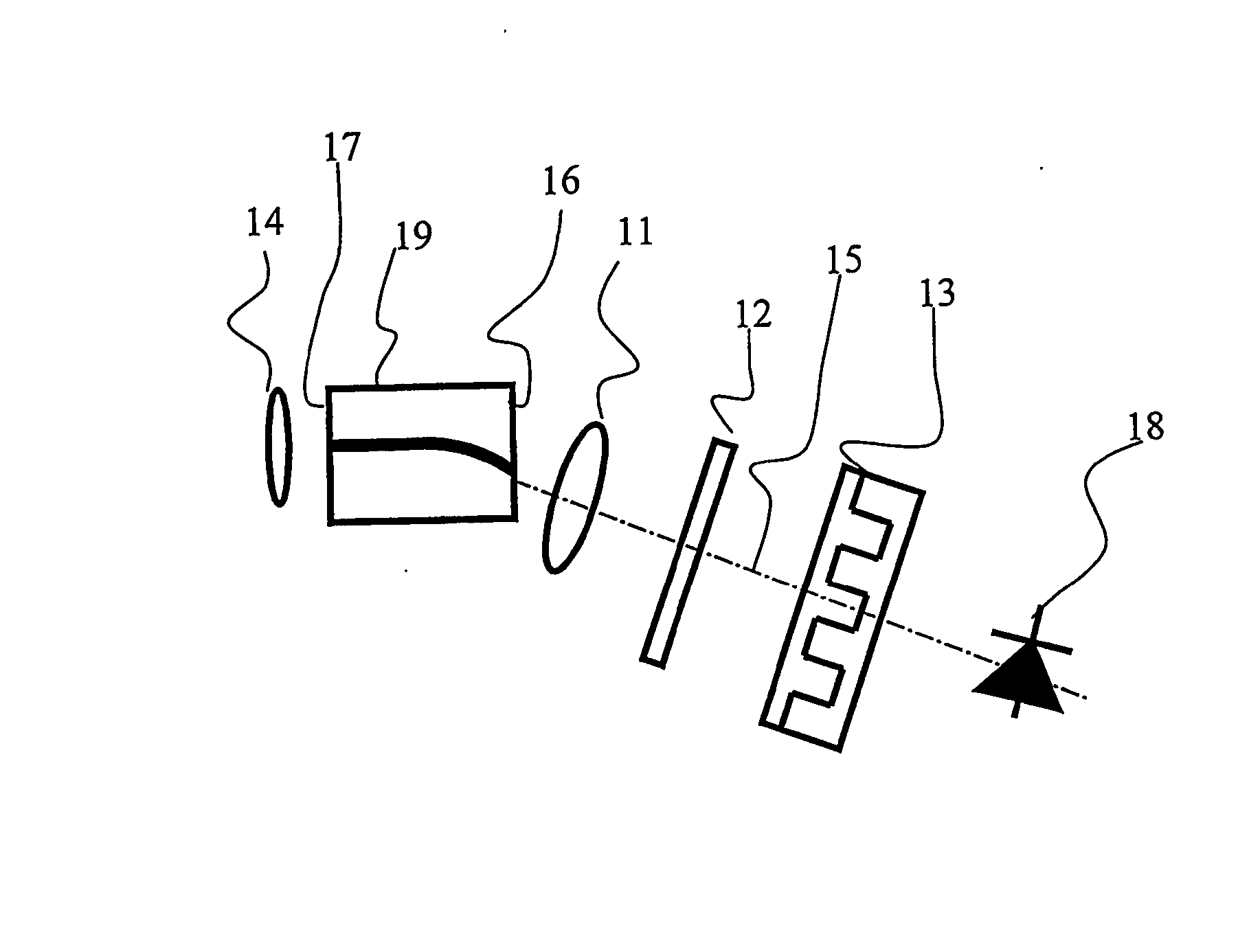Wavelength Control of an External-Cavity Tuneable Laser
a tuneable laser and wavelength control technology, applied in semiconductor lasers, instruments, optics, etc., can solve the problems of spatial loss, reduced output power of transmitters, and inability to accurately control the positioning of tunable elements associated with transmitter lasers over the entire tuning and operating temperature range, so as to increase the amplitude modulation of laser output signals, increase the phase shift, and reduce spatial loss
- Summary
- Abstract
- Description
- Claims
- Application Information
AI Technical Summary
Benefits of technology
Problems solved by technology
Method used
Image
Examples
Embodiment Construction
[0056] The tuneable mirror is an electro-optic element, in which tunability is accomplished by using a material with voltage dependent refractive index, preferably a liquid crystal (LC) material. A preferred embodiment of the tunable mirror is shown in FIG. 1. Tunable mirror 1 comprises a waveguide 2 formed onto a substrate 3 and a diffraction grating 4 formed on waveguide 2. Over the diffraction grating 4 a cladding layer 5 that fills at least the interstices of the diffraction grating is formed, said cladding layer being made of a LC material. The thickness of the LC material is preferably not larger than 2 μm, more preferably of about 1 μm. Optionally, there may be an anti-reflection coating 6 over the cladding layer and / or an anti-reflection coating 7 on the surface of substrate 3, which is opposite to the waveguide. Two transparent conductors 8 and 9 are placed on opposite surfaces of the liquid crystal layer. A more detailed description of the structure of a tuneable mirror ac...
PUM
 Login to View More
Login to View More Abstract
Description
Claims
Application Information
 Login to View More
Login to View More - R&D
- Intellectual Property
- Life Sciences
- Materials
- Tech Scout
- Unparalleled Data Quality
- Higher Quality Content
- 60% Fewer Hallucinations
Browse by: Latest US Patents, China's latest patents, Technical Efficacy Thesaurus, Application Domain, Technology Topic, Popular Technical Reports.
© 2025 PatSnap. All rights reserved.Legal|Privacy policy|Modern Slavery Act Transparency Statement|Sitemap|About US| Contact US: help@patsnap.com



